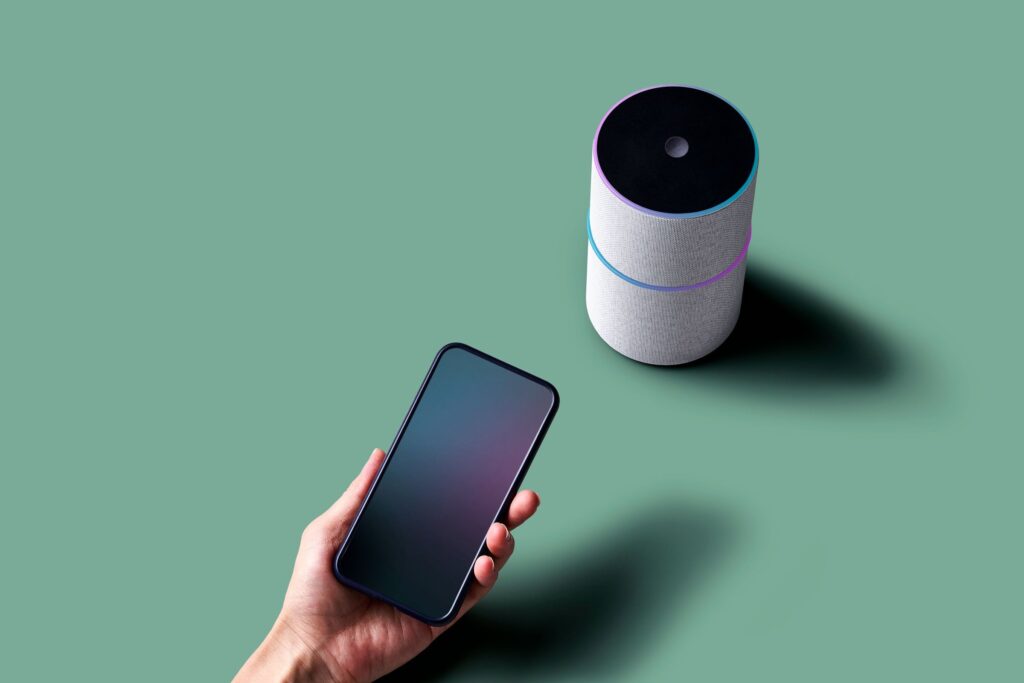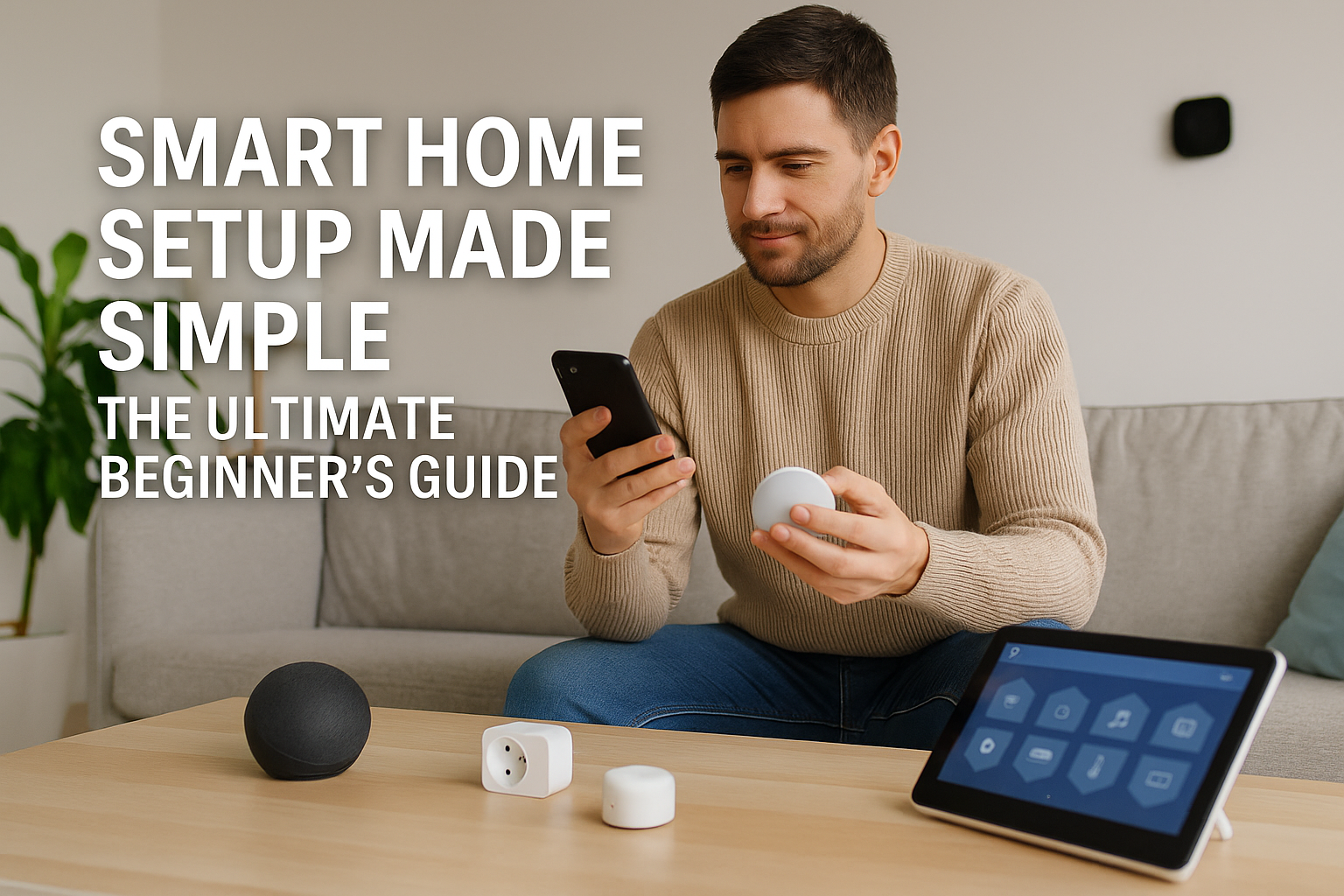Smart homes aren’t just science fiction anymore—they’re becoming a real, affordable, and surprisingly easy reality for homeowners and renters alike. From adjusting your thermostat with a voice command to unlocking your door with a tap on your phone, smart home technology brings convenience, comfort, and security to your fingertips.
But with so many devices, protocols, and platforms out there, setting up a smart home can feel overwhelming. This guide breaks it down step-by-step so you can confidently start building a smart home system that fits your lifestyle, budget, and tech experience.
What Is a Smart Home?
A smart home refers to a living space where devices—such as lights, thermostats, security systems, cameras, and appliances—are connected to the internet and can be controlled remotely or automated. These devices communicate with each other via your Wi-Fi, Bluetooth, Zigbee, or Z-Wave networks, often managed through a central app or voice assistant.
Key Benefits:
- Convenience: Control your home from anywhere via your phone or voice.
- Efficiency: Automate lighting, heating, and energy usage to reduce waste.
- Security: Monitor your home with smart cameras, locks, and sensors.
- Customization: Tailor your environment to suit your daily routines.
Step 1: Choose Your Smart Home Ecosystem
Before buying any devices, decide on the ecosystem that will power your smart home. This is the foundation that ties everything together.
Top Ecosystems:
- Amazon Alexa
- Works with a huge number of devices
- Affordable smart speakers
- Excellent for voice control
- Google Home / Google Assistant
- Best integration with Android and Google services
- Easy setup via Google Home app
- Apple HomeKit / Siri
- Ideal for Apple users
- Highest emphasis on privacy and security
- Works seamlessly across iPhones, iPads, and Macs
- Samsung SmartThings
- Supports multiple protocols (Wi-Fi, Zigbee, Z-Wave)
- Offers deep automation with third-party compatibility
Pro Tip:
Stick to one platform initially to avoid compatibility issues. Most smart home devices now support at least two or more of these ecosystems, but not all.
Step 2: Set Up a Reliable Wi-Fi Network
Your smart devices need a strong, stable internet connection to function properly.
Wi-Fi Tips:
- Use a dual-band or tri-band router for handling multiple devices.
- Upgrade to a mesh Wi-Fi system like Google Nest WiFi or Eero if you have a larger home.
- Place your router centrally to avoid dead zones.
- Name your 2.4GHz and 5GHz bands separately—many smart devices connect only to 2.4GHz.
Step 3: Start With Smart Speakers or Displays
Smart speakers (like Amazon Echo, Google Nest Mini, or Apple HomePod Mini) act as your smart home hub. You’ll use them for voice commands, control, and sometimes automation.
Best Choices:
- Echo Dot (5th Gen) – Compact, budget-friendly, Alexa-enabled.
- Nest Hub – Google Assistant + screen to view video feeds or calendars.
- HomePod Mini – For full HomeKit integration with superior sound.
Setting one of these up is as simple as:
- Plugging in the speaker.
- Downloading the companion app (Alexa, Google Home, or Apple Home).
- Following the in-app instructions to connect to Wi-Fi.

Step 4: Add Smart Lighting
Smart lighting is often the easiest and most affordable entry point into home automation.
Options:
- Smart Bulbs (e.g., Philips Hue, Wyze, Kasa): Replace regular bulbs with Wi-Fi or Zigbee-enabled ones.
- Smart Switches (e.g., Lutron Caseta): Ideal if you want physical wall control and automation.
- Smart Plugs: Turn ordinary lamps into smart lights.
Features to Look For:
- App or voice control
- Scheduling and automation
- Dimming and color changing
- Motion detection (optional)
Step 5: Upgrade to a Smart Thermostat
Smart thermostats like the Google Nest, Ecobee, or Amazon Smart Thermostat learn your routines and adjust temperatures automatically for energy savings.
Benefits:
- Lower energy bills
- Remote temperature control
- Voice and app compatibility
- Geofencing for automation when you leave or return home
Installation:
Most are DIY-friendly, but double-check if you have a C-wire (common wire), which is required for consistent power.
Step 6: Secure Your Home with Smart Cameras and Locks
Smart security is the most powerful reason to go smart.
Smart Cameras:
- Indoor Cameras: Monitor kids, pets, or elderly parents.
- Outdoor Cameras: Keep an eye on entrances and driveways.
- Doorbell Cameras: Like Ring or Nest Hello, these offer video and two-way talk at your front door.
Smart Locks:
- Brands like August, Yale, or Schlage Encode let you:
- Lock/unlock doors from your phone
- Create temporary guest access codes
- Receive alerts if someone enters
Make sure you have a strong Wi-Fi signal near entry points.
Step 7: Expand with Smart Sensor
Smart sensors automate your home even further:
- Motion Sensors: Turn on lights when you enter a room.
- Contact Sensors: Monitor doors and windows.
- Water Leak Detectors: Get alerts before leaks become floods.
- Air Quality Monitors: Track pollution, humidity, or smoke levels.
Most sensors pair directly with your ecosystem and support automation routines like “if motion is detected, turn on hallway lights.”
Step 8: Use Smart Plugs and Appliances
Smart plugs are inexpensive tools that let you control non-smart devices like fans, coffee makers, or holiday lights.
- Schedule devices to turn on/off
- Monitor energy usage
- Control via voice or app
For large appliances, newer refrigerators, ovens, or washers often have built-in smart features compatible with Alexa or Google.
Step 9: Automate Routines and Scenes
Once your devices are connected, it’s time to make them work together.
Examples of Routines:
- “Good Morning”: Turn on bedroom lights, start the coffee maker, and adjust the thermostat.
- “Away Mode”: Lock the door, turn off all lights, lower thermostat, and arm security system.
- “Movie Night”: Dim the lights, lower blinds, and power on the TV.
Each platform has its own version:
- Alexa: Use “Routines” in the Alexa app.
- Google Home: Set “Automations” or link to Assistant commands.
- HomeKit: Use the “Scenes” tab in the Home app.
Step 10: Secure Your Smart Home
Smart homes need smart security measures.
Tips to Stay Secure:
- Use strong, unique passwords for each device.
- Enable two-factor authentication (2FA) where available.
- Keep device firmware updated via their apps.
- Consider putting smart devices on a separate Wi-Fi network (guest network) for isolation.
- Use a VPN router or firewall for added protection.
Common Mistakes to Avoid
- Mixing Incompatible Brands: Always check what ecosystems a product supports before buying.
- Skipping Router Upgrades: An old or cheap router can bottleneck your entire smart system.
- Ignoring Firmware Updates: Unpatched devices are vulnerable.
- Buying Too Much Too Soon: Start small. Master a few devices before adding more.
Future-Proofing with Matter and Thread
The new Matter protocol, backed by Apple, Google, Amazon, and others, aims to unify smart devices across ecosystems.
- Matter ensures broader compatibility and easier setup.
- Thread is a networking protocol that’s low power and fast—used in HomePod Mini, Nest Hub, etc.
When buying new devices, check for Matter and Thread compatibility to future-proof your smart home.
Smart Home Setup Checklist (TL;DR)
✅ Choose your ecosystem: Alexa, Google, Apple, or SmartThings
✅ Ensure strong home Wi-Fi
✅ Install a smart speaker/display
✅ Start with smart bulbs, plugs, or thermostats
✅ Add security: cameras, locks, sensors
✅ Automate routines for convenience
✅ Update firmware and follow security best practices
✅ Expand gradually and test integrations
Conclusion: Your Smart Home Journey Starts Now
Building a smart home doesn’t require a tech degree or thousands of dollars. With a clear plan and the right tools, you can create a connected space that simplifies your daily life, enhances security, and helps you save energy.
Start with the basics. Get to know your ecosystem. Then grow your smart home, one device at a time. And remember, the smartest homes are the ones that fit your needs—not the most expensive or complex.

